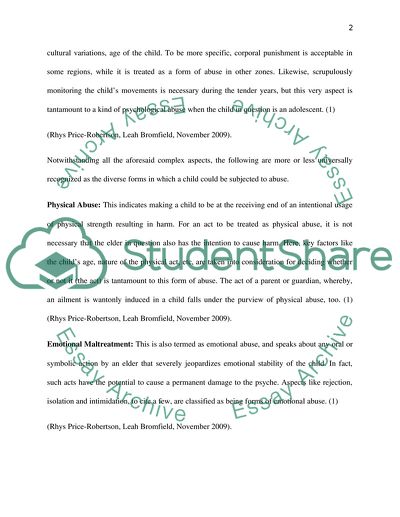Cite this document
(The Role of Sports Coaches in Ensuring Child Protection against Abuse Term Paper, n.d.)
The Role of Sports Coaches in Ensuring Child Protection against Abuse Term Paper. Retrieved from https://studentshare.org/education/1740704-with-refernence-to-current-literature-discuss-how-one-of-the-following-areas-relates-to-good-coaching-practice-ie-why-is-it-important-for-coaches-to-have-knowledge-of-child-protection
The Role of Sports Coaches in Ensuring Child Protection against Abuse Term Paper. Retrieved from https://studentshare.org/education/1740704-with-refernence-to-current-literature-discuss-how-one-of-the-following-areas-relates-to-good-coaching-practice-ie-why-is-it-important-for-coaches-to-have-knowledge-of-child-protection
(The Role of Sports Coaches in Ensuring Child Protection Against Abuse Term Paper)
The Role of Sports Coaches in Ensuring Child Protection Against Abuse Term Paper. https://studentshare.org/education/1740704-with-refernence-to-current-literature-discuss-how-one-of-the-following-areas-relates-to-good-coaching-practice-ie-why-is-it-important-for-coaches-to-have-knowledge-of-child-protection.
The Role of Sports Coaches in Ensuring Child Protection Against Abuse Term Paper. https://studentshare.org/education/1740704-with-refernence-to-current-literature-discuss-how-one-of-the-following-areas-relates-to-good-coaching-practice-ie-why-is-it-important-for-coaches-to-have-knowledge-of-child-protection.
“The Role of Sports Coaches in Ensuring Child Protection Against Abuse Term Paper”, n.d. https://studentshare.org/education/1740704-with-refernence-to-current-literature-discuss-how-one-of-the-following-areas-relates-to-good-coaching-practice-ie-why-is-it-important-for-coaches-to-have-knowledge-of-child-protection.


